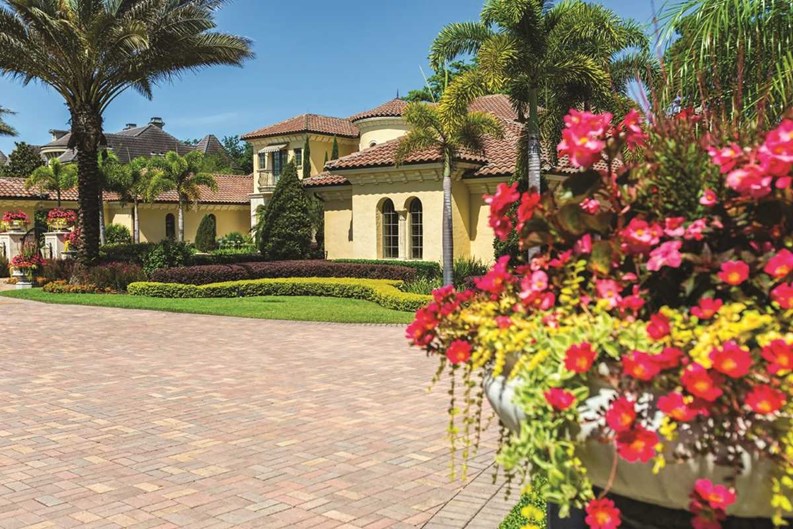South Florida is the land of sunshine, swaying palms, and long miles of sandy beaches, but contrary to what many folks may think, the region does have seasons; they just happen to be a bit different (and a lot more subtle) than the more northerly parts of the state and, of course our northern neighbors. While many states enjoy a distinct winter, spring, summer and fall, Florida is more accurately described as having a “wet” or hurricane season, and a “dry” cooler period.
Locals will often quip that we have 'hot, and hotter' when questioned about seasons, or another favorite, 'We had winter yesterday.' Still, most Floridians take the threat of a hurricane much better than the threat of cold weather.
The winter of 2010 was an exceptionally cold winter statewide, and South Florida saw the coldest winter recorded in 82 years when temperatures in Miami dipped to 36 degrees. Then the next three winters reported slightly above average temperatures, with Miami averaging 72.3 degrees for the winter season.
The Grow Pros
Whether the weather remains predicable or is unseasonably hot or cold, Florida’s landscapers and groundskeeping pros have to know how to adjust to keep lawns, trees, shrubbery and flower plantings lush and green at all times. Fortunately, since the early 1950s horticulture professionals have the Florida Nursery, Growers, and Landscape Association (FNGLA) to provide education, training, and certification.
Deb Joneck, chairperson for FNGLA’s marketing and membership committee has served on the board for eight years. Ben Bolusky helps staff the committee with Joneck—and both say they're particularly proud of the education programs the group offers to its members.
Certification programs such as Certified Horticulture Professional, Certified Landscape Technician, Certified Landscape Maintenance Technician, Certified Landscape Contractor and Certified Landscape Designer are all available to teach professionals how to grow, design, and maintain Florida landscapes.
“FNGLA is the largest organization of its kind in the nation,” says Joneck. “Every September, we host the Landscape Show in Orlando. The event provides an opportunity for exhibitors to share the best new products and ideas available in our industry.”
Joneck takes exception to the idea that Florida has limited seasons. “If you are observant, you will notice we really do have seasons. Oak blooms in February and March, and a yellow blanket of pollen covers everything.”
Joneck also notes native Bald Cypress trees lose their needles at the first blast of cooler weather around November. These cooler days are the ones she calls “Chamber of Commerce Days,” when the humidity drops to or below 65%, and skies are blue and sunny. This is the weather Florida is famous for worldwide; a main reason why the state is a destination of choice for vacationers and visitors nationally and internationally, and the signal for the Florida “winter season.”
Protecting Native Landscapes
Shane Humble, CLMT, a Florida Certified Landscape Maintenance Technician, is part- owner of Clintar Landscape Management in Palm Beach. He explains South Florida’s “winter season” as a very short period of weeks when the overnight temperatures drop into the low 40’s and the daytime highs hover around the mid 70’s. “We cover our annuals with cloth about once every two winter seasons in South Florida,” he states.
Humble and other landscape professionals statewide generally start prepping for winter plantings by mid-October, with a goal of having everything at the peak of lush and lovely by November 1st. Seasonal residents from the north begin to arrive in Florida by early November, and most HOAs and condo communities want to showcase their properties to coincide with the snowbirds' arrival, as well as the upcoming holiday seasons. Although winter is generally drier, Humble explains this has not been the case over the last few years, which in some ways makes the winter preparations a smoother operation. “The additional rainfall has aided in the reduction of transplant loss and overuse of irrigation in milder temperatures,” he says.
Professional landscapers agree the Florida growing season is twelve months long—here, even winter is not a dormant time of year. During the dry season, plants and grasses grow more slowly but nothing really stops growing. This is the time of year to work smart and get ahead of weeds, pests, and fast-growing non-native invasive plants. It is also a time to nurture and protect Florida’s native species.
Adam Grayson, director of operations at Lake & Wetland Management, Inc., based in Delray Beach, and with offices throughout the state, is passionate about preserving Florida’s native plants and wetlands.
“Our seasons are hot and hotter, and we experience a twelve month growing season,” Grayson explains. Winter is the time of year Grayson recommends working to re-establish native plants and to reclaim areas where “exotic invasive plants” have encroached during the hot, wet summer season when everything grows explosively. “The number one challenge for Florida landscapers is not controlling native plants and trees, he states. “It's the invading exotic plants that flourish in the Florida climate, and then compete with our native plants for soil and nutrients.”
These invasive species arrive in Florida by various methods. Some arrive incidentally as birds and animals migrate, and some are even mistakenly invited across its borders. Grayson cites an apparently harmless water plant, originally brought into Florida from Asia by the aquarium trade. When these “hydrillas” ended up in the local waterways they grew rapidly (as much as an inch a day during the humid summer season) crowding and choking out native flora and fauna. Hydrillas are now a prohibited import species but this aggressive non-native plant still poses a threat to Florida’s lakes, wetlands, and waterways as landscapers and groundskeeper struggle to control and remove it.
The Brazilian pepper tree is another invasive plant with the potential to destroy Florida’s state habitat. Brazilian peppers were introduced to Florida in the 1890's for use as ornamental shrubs, but they disrupt the interdependence of other plants and animals. When Brazilian pepper trees infest an area, native plants and animals disappear, right along with the tax dollars used to fight this species throughout central and southern Florida. Brazilian peppers are now listed on the State of Florida's prohibited plant list. It is illegal to cultivate, sell or transport them—but they already cover more land in Florida than the infamous Melaleuca tree which has taken over hundreds of thousands of acres in the Everglades.
The Melaleuca, native to Australia, continues to threaten the very existence of the Everglades, Florida’s internationally known eco-treasure. It is found primarily in the more frost-free areas of south Florida but also in the warmer coastal areas of Pasco County in central Florida.
Grayson warns of the far-reaching effects invasive, non-native plants have, not only on the waterways, but on the entire eco-structure. “Birds and wildlife are also affected when the habitat is altered,” he says. “Protecting the native environment is not just a 'feel-good' exercise, but a way to preserve the Florida we know and love.”
Groundskeeping for the Winter
Sometimes a board, guided by practices common in other states will, recommend scaling back landscaping work in the winter as a cost-cutting measure, but as has been mentioned previously, professionals know that wintertime is not a time to spare effort or expense. Grayson recommends working hard during the winter months to get on top of the invasive non- native species and to establish new native plant areas while temperatures are mild to moderate.
Mike Guido, director of maintenance operations for Landscape Service Professionals in Tamarac, agrees with Grayson—winter is no time to slow down.
His advice to boards on curbing winter landscaping expenses is to the point. “The sweet taste of savings is replaced over time by the bitterness of poor performance.” Guido lists three additional landscape challenges for Florida landscapers: “Weeds, insects, and fungus. With a twelve month growing season, pests and nuisance animals remain fully active,” he states, and recommends spending time and funds in the winter on controlling those challenges, and getting ahead of them before spring and summer. “The Florida Department of Agriculture has stated Florida averages one new pest per month,” he explains. “Winter is the time to fight back.”
Guido also recommends addressing irrigation issues during the winter season. “Irrigation systems are designed to fail,” he states. “The parts are all plastic, and the whole system is only as new as the oldest part.” Guido knows this is often difficult to explain to an HOA board. “Maybe they have just spent a large sum on replacing gears and pipes, and then the pump goes out.” If adequate irrigation is not available, no landscape will survive in the Florida climate.
Humble agrees on the importance of adequate irrigation, and recommends that boards consider the latest technology. “With the movement by most irrigation manufacturers to create smart controllers, it would be wise for boards to evaluate their current system to see if they would be a candidate for such.” Smart systems allow you to enter the soil type, and even your zip code to track weather in your area. The temperature, humidity and precipitation are monitored and relayed to the clock, where a decision is made to allow the various irrigation zone sprinklers to turn on or not. This occurs automatically—no need for a resident, groundskeeper, or manager to touch the clock. Humble cites numerous communities where this technology has decreased water consumption by more than 50%. “Additionally, grass requires substantially more water than plants, so boards should evaluate their current landscape plan and decide if there are areas that can utilize larger planting beds,” he suggests.
Guido recommends property management personnel, boards and landscape committees review the University of Florida’s Institute of Food and Agricultural Sciences (UF/IFAS) Best Management Practices online. These programs provide excellent and readily available information on most landscaping concerns.
Everyday Care
After the main challenges of invasive plants, weeds, fungus, and insects are addressed, other landscape activities best suited for winter months may seem routine. Cleaning beds, remulching and replanting appropriate winter plants, along with very mild pruning should be all that is required to have most properties at the peak of winter perfection when the snowbirds arrive and the winter/holiday season begins. The winter season is also the best time to have a certified arborist evaluate any large hardwood trees to see if the pruning practices have been kept to local codes and standards, and if trimming is recommended prior to hurricane season.
Winter landscaping done right not only creates a beautiful environment for the season, but also sets the stage for a smoother transition into the busy spring and summer landscaping demands. Spring in Florida may come as early as March, and lawn and landscape professionals know, there is no down time—just a change in seasonal duties!
Anne Childers is a freelance writer and a frequent contributor to The South Florida Cooperator.







Leave a Comment